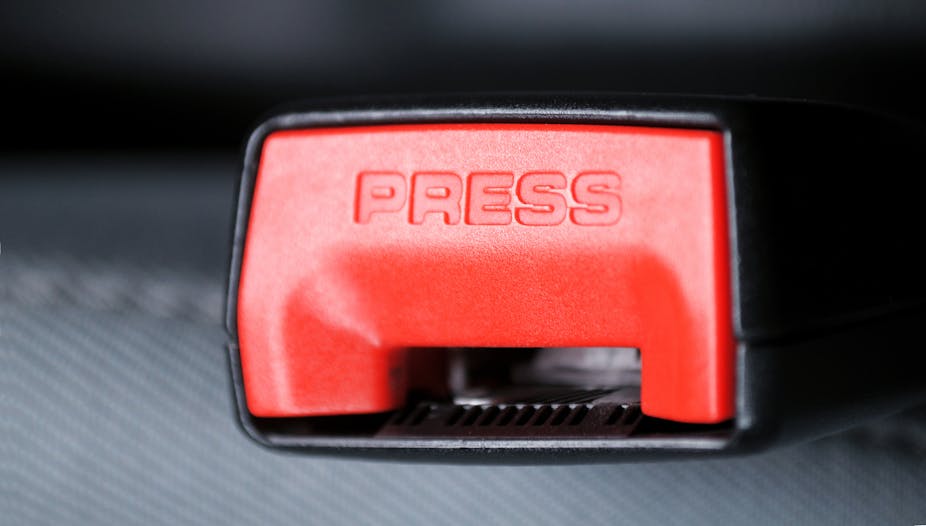The NSW School Bus Safety Community Advisory Committee made a major recommendation in its report released this week that seatbelts should be installed on all rural school buses that operate outside lower-speed urban areas.
It’s the result of a long and drawn out campaign from lobby groups in rural communities who have seen three children die in school bus accidents over the last decade, and another 624 injured.
The most recent was in September this year when a young student died after a truck collided with his school bus – a death that arguably could have been prevented if there had been seatbelts on board.
The committee’s report is welcome, but its recommendation to allow ten years to fit all NSW rural buses with seatbelts is too long to wait. We need to implement these changes as soon as possible to prevent any further deaths or injuries on NSW roads.
A reason to act
There are about 1,500 dedicated school buses in NSW, which carry more than 60,000 school children each day.
School buses provide a relatively safe form of travel, but incidents involving buses carrying school children do occur. The most recent was the September fatal crash at Singleton in the NSW Hunter Valley, resulting in the death of a school student aged nine years old who was ejected through a bus window.
Any death or injury that can be avoided on our roads, should be. For the community, the risks are simply too great, especially in rural and regional areas where buses travel at higher speeds and where there may be more hazards.
The recommendations
The Advisory Committee, which was set up in April of last year, has made 35 recommendations.
But the major recommendations include all new and replacement buses used in NSW rural areas being fitted with seatbelts in the next 10 years; encouragement to retrofit existing buses; extra school buses should be scheduled to run on some NSW routes so that school children do not have to stand for all or part of their travel by the start of the third term next year; and prohibitions on school bus operations where children have to stand to travel on buses on unsealed roads, or roads with a speed limit of at least 80km/h, outside urban areas.
Many of these recommendations are based on the findings by NSW Parliament’s STAYSAFE Committee that reported nearly 20 years ago into the safety of school children on and around buses.
Sooner rather than later
But do these recommendations go far enough?
It’s clear that seatbelts need to be on rural school buses, but there are significant questions about the 10 year implementation timeframe.
Harold Scruby, chairman of the Pedestrian Council of Australia, said the 10 year timescale just wasn’t “good enough”, adding that most buses could “be retrofitted within a year.”
Glenda Staniford, a founder of the Belt Up for Safety Action Group, wants changes to be implemented quickly, but accepts that a one year time frame cannot be achieved. Many buses are unable to be retrofitted, and work can only be carried out in school holidays or weekends, or if a bus operator has a spare bus to use.
The NSW Parliament’s Greens transport spokeswoman, Cate Faehrmann has said a Bill for compulsory seatbelts on school buses will be updated to take in the Advisory Committee’s recommendations in time for the next sitting week of parliament. But she says the ten year timeframe is “a long time to wait,” adding that she didn’t think “the parents of school children travelling in urban areas will accept the limited scope of this recommendation.”
Protect all children
Beyond the focus on the proposed 10-year timeframe, there is also concern that there are large areas of NSW where buses will not be required to fit seatbelts. Bus operators on the fringes of metropolitan areas don’t use urban commuter buses, but they are considered to be inside the greater Sydney metropolitan area.
Indeed, school buses in the Hunter Valley, where the September 2012 fatal crash took place, will not have to fit seatbelts under the proposals because this region is considered to be in the Sydney outer metropolitan area.
There are subsidies offered to bus operators in these areas under the Federal Government’s Seatbelts on Regional School Buses Program, a program recently extended in the last budget til June 2016.
But it could be that NSW bus operators would be unable to access these funds until the NSW government allows a contract variation.
It’s time
It is time for NSW to act, and act decisively. This issue has been going on for far too long to leave another decade to pass before all rural schools buses are fitted with seatbelts.
More than a decade ago, I wrote in a co-authored paper that it is “a chilling and horrible thought that on Australian roads today there are buses operating in the carriage of dozens of passengers — even with more than 100 passengers — who are unrestrained.”
That there are school buses “filled with children under "3-for-2” seating rules without seatbelts, and with a proportion standing in the aisles and not even able to benefit from the limited safety of a seated position, is from any objective perspective a national disgrace.“
The Advisory Committee’s report is positive step, but we need action to provide seatbelts for children on school buses, sooner rather than later.

